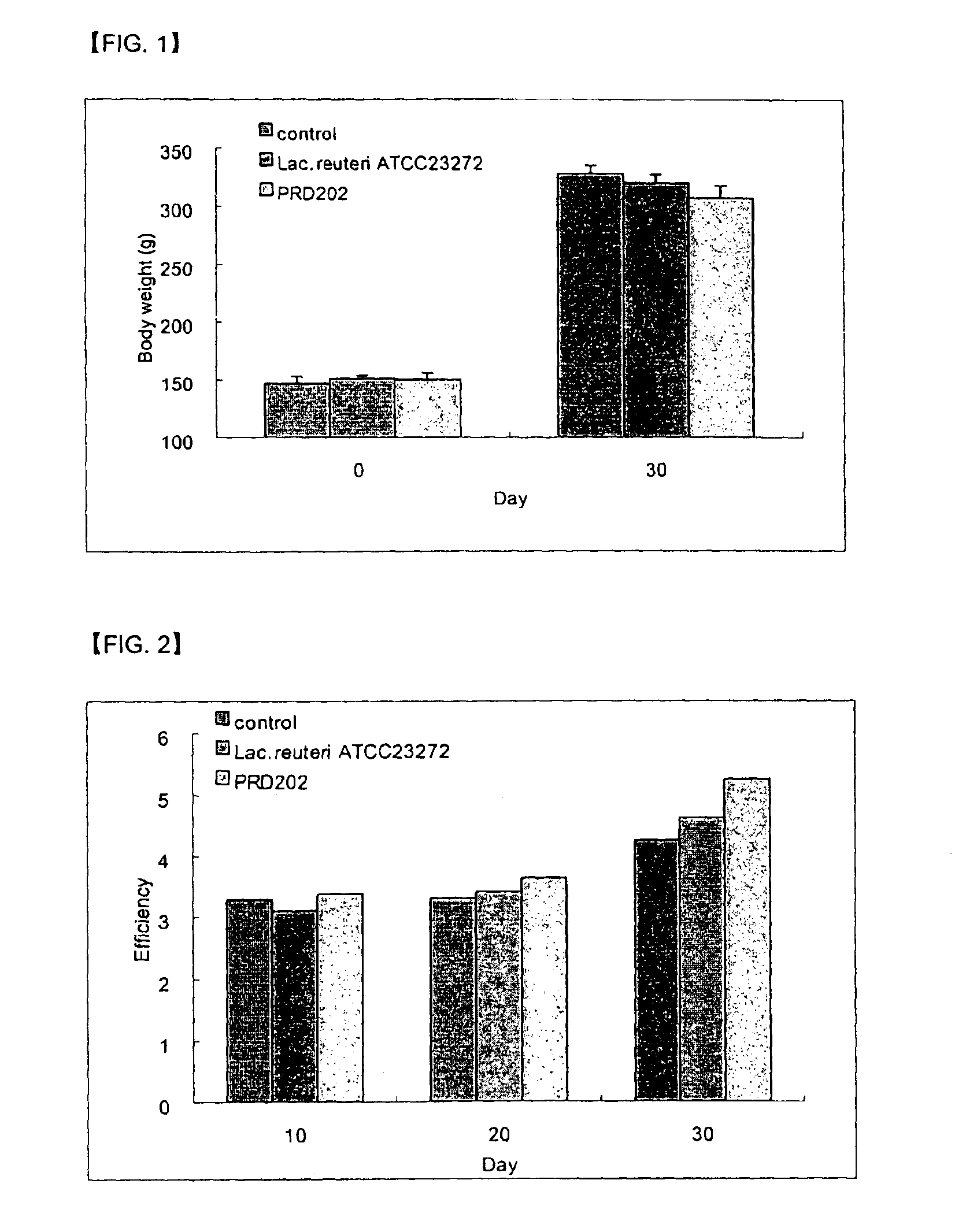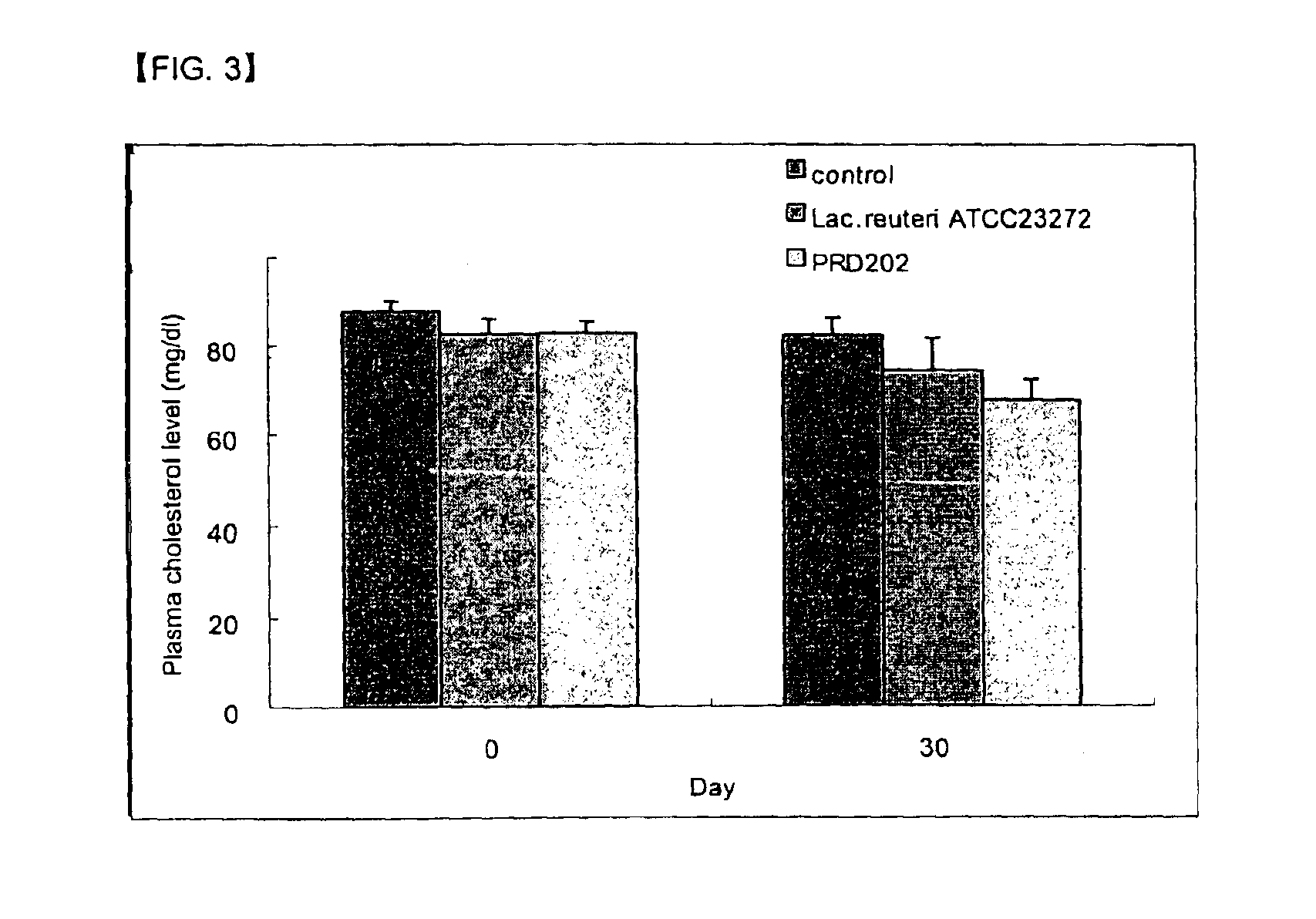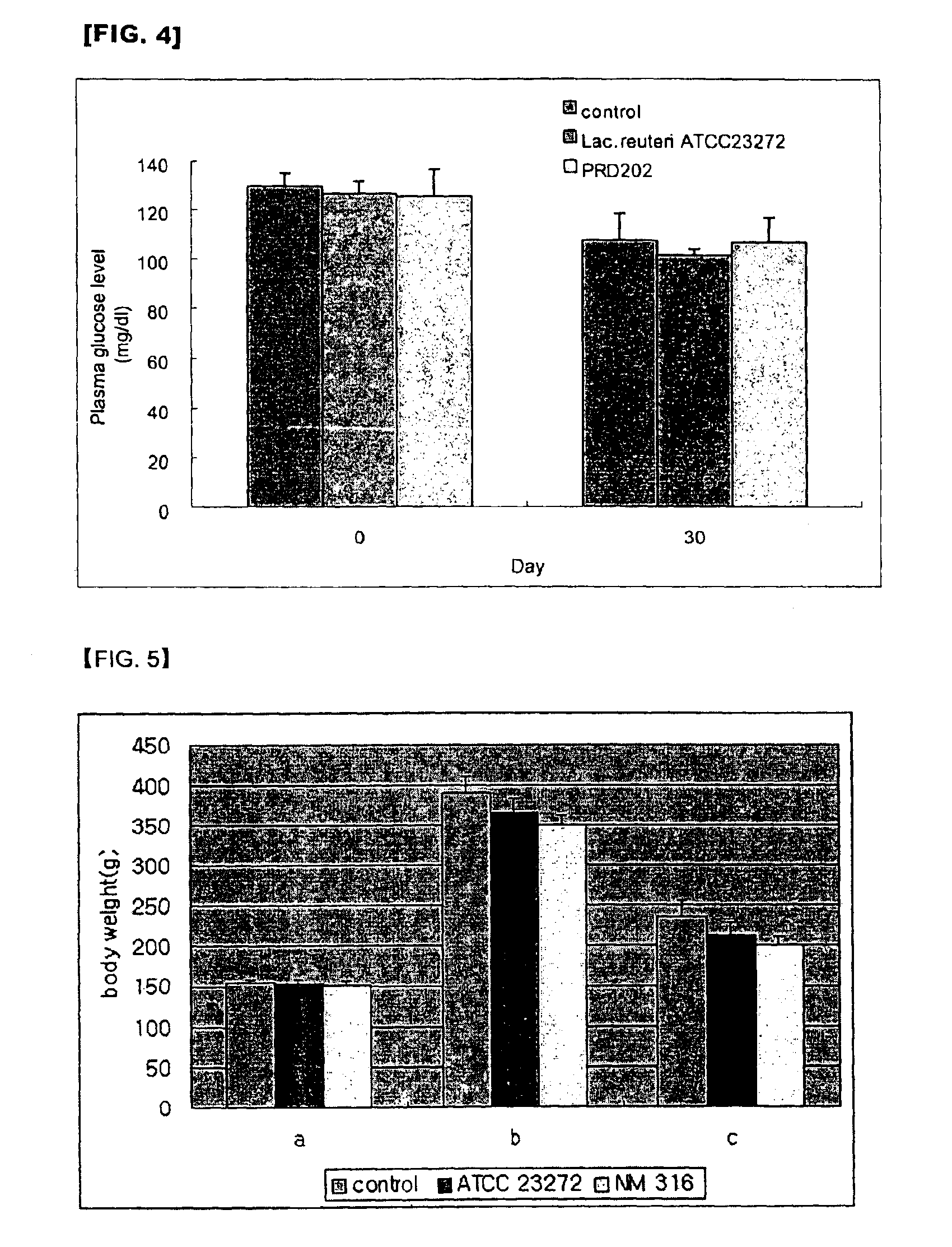Microorganisms for preventing and/or treating obesity or diabetes mellitus
a technology for obesity and diabetes mellitus, applied in the field of microorganisms for preventing or treating obesity or diabetes mellitus, can solve the problems of imposing a substantial cost on the public as well as on patients, losing control of blood glucose levels, late complications, etc., and achieve the effect of preventing or treating obesity
- Summary
- Abstract
- Description
- Claims
- Application Information
AI Technical Summary
Benefits of technology
Problems solved by technology
Method used
Image
Examples
example 1
Selecting of Microorganism Which Produces a Large Amount of Polysaccharide
[0075]In order to obtain a mother strain of Lactobacillus PRD202 which produces a large amount of dietary fiber, six (6) kinds of the known microorganisms were selected and then polysaccharides productivity, glucose consumption rate and resistance against gastric acid and bile acid were measured for selecting a mother strain which would be mutated.
[0076]In order to measure the glucose consumption rate of each microorganism, each Lactobacillus strain stored at a −80° C., was inoculated into each 10 ml cap tube and was activated in the incubator for 24 hours. The activated microorganisms were inoculated in 100 ml Man Rogosa Sharp (MRS) medium (2% glucose, 1% beef extract, 1% peptone, 0.5% yeast extract, 0.1% Tween-80, 0.2% ammonium citrate, 0.5% sodium acetate, 0.01% MgSO4, 0.005% MnSO4, 0.05% L-cysteine HCl) and then samples were collected every 3 hours to measure the glucose consumption rate. As illustrated in...
example 2
Obtaining the Mutated Strain Producing a Large Amount of Polysaccharides
[0085]In order to obtain the mutated strain producing a large amount of dietary fiber, the mother strain was incubated in modified MRS medium at 37° C. for 6 hours and centrifuged to obtain the precipitation. The precipitated microorganism was rinsed once with phosphate buffered saline (PBS, pH 7.0).
[0086]After NTG (N-methyl-N-nitro-N-nitrosoguanidine) was added until the final concentration became 200 μg / ml, the microorganism was incubated at 37° C. for 30 to 120 minutes so that 99.9% of the microorganism became extinct. In order to avoid reverse-mutation of the mutated microorganism, the microorganism was transferred three times to MRS liquid medium.
[0087]The mutated microorganism thus obtained was diluted properly to form approximately 30 colonies per plate and smeared on MRS medium containing high concentration of sucrose (5% sucrose, 1% beef extract, 1% peptone, 0.5% yeast extract, 0.1% Tween-80, 0.2% Ammon...
example 3
Characteristics of Lactobacillus PRD202 and NM316 and Identification Thereof.
[0092]In order to analyze phylogenesis of PRD202 and NM316 of which EPS yield had been increased, each strain was inoculated into MRS liquid medium and incubated without shaking at 37° C. for 12 hours.
[0093]Cultured mediums were centrifuged at 6,000 rpm in 4° C. to obtain microorganisms and the nucleic acids thereof were isolated by means of using the CTAB / NaCl method. Upon determining the nucleotide sequence of 16s rRNA by using 16s rRNA consensus primer, Lactobacillus PRD202 was identified as Lactobacillus reuteri and Lactobacillus NM316 was identified as Lactobacillus fermentum.
[0094]In addition, the utilization rate of each sugar was measured in the above two microorganisms by using API 50 CH Kit (BioMerieux Co.). As a result, the utilization rates of sugars of Lactobacillus PRD202 were little different from those of the mother microorganism. NM316 extensively utilized L-arabinose, ribose, galactose, g...
PUM
| Property | Measurement | Unit |
|---|---|---|
| temperature | aaaaa | aaaaa |
| thickness | aaaaa | aaaaa |
| thickness | aaaaa | aaaaa |
Abstract
Description
Claims
Application Information
 Login to View More
Login to View More - R&D Engineer
- R&D Manager
- IP Professional
- Industry Leading Data Capabilities
- Powerful AI technology
- Patent DNA Extraction
Browse by: Latest US Patents, China's latest patents, Technical Efficacy Thesaurus, Application Domain, Technology Topic, Popular Technical Reports.
© 2024 PatSnap. All rights reserved.Legal|Privacy policy|Modern Slavery Act Transparency Statement|Sitemap|About US| Contact US: help@patsnap.com










